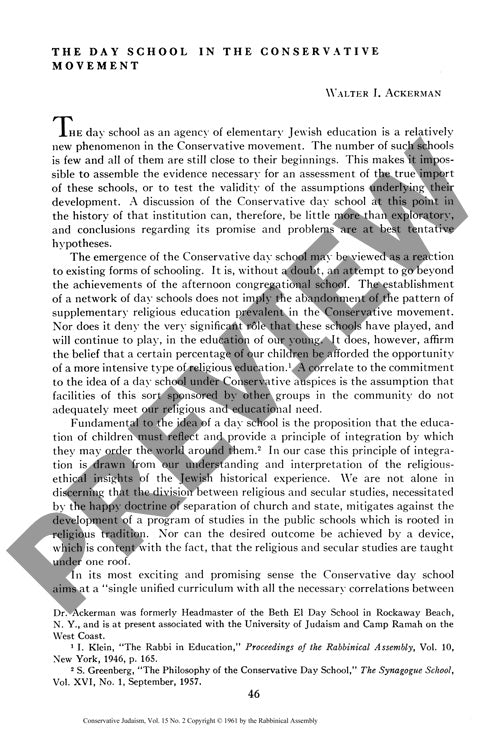The Day School in the Conservative Movem
Couldn't load pickup availability
This exploratory study examines the emergence and development of day schools within the Conservative movement, a relatively new phenomenon in elementary Jewish education. The analysis employs descriptive methodology, drawing on survey data from participating schools, conference proceedings, and institutional records to assess the current state and challenges of Conservative day schools. The study finds that by 1958, fifteen foundation and day schools existed throughout North America, serving approximately 1,500 pupils, representing only 3.4% of all pupils in Jewish "full-time" non-public schools. Key findings reveal that the emergence of these schools resulted from multiple factors, including post-World War II prosperity, the impact of the Holocaust and Israeli statehood, and changing attitudes toward cultural pluralism in America. Survey data indicate that parental motivations for enrollment often stem from dissatisfaction with public school conditions rather than primarily seeking intensive Jewish education. The study identifies significant challenges including high tuition costs ($500-600 annually for day schools), limited enrollment appeal, and tensions between stated educational goals and actual implementation. Curriculum analysis reveals substantial variation among schools in Hebrew studies programs, ranging from five to seventeen hours weekly, with general consensus on Hebrew language proficiency and biblical text study. The research concludes that while these schools demonstrate measurable academic achievement, critical questions remain regarding their long-term effectiveness in producing committed Jewish individuals and their ability to meaningfully integrate secular and religious education beyond superficial subject matter connections.

More Information
-
Physical Description
-
Publication Information
Published 1961
ISBN
-
Publication Credits
Walter Ackerman

